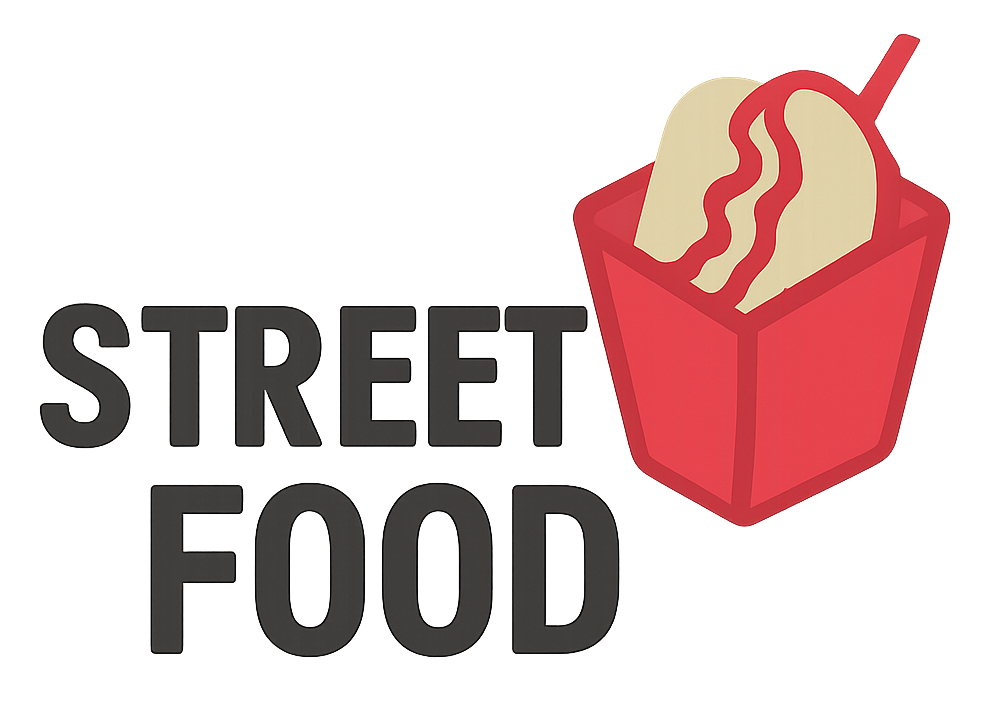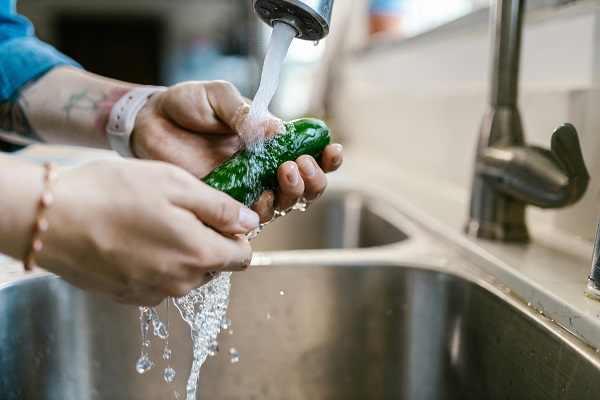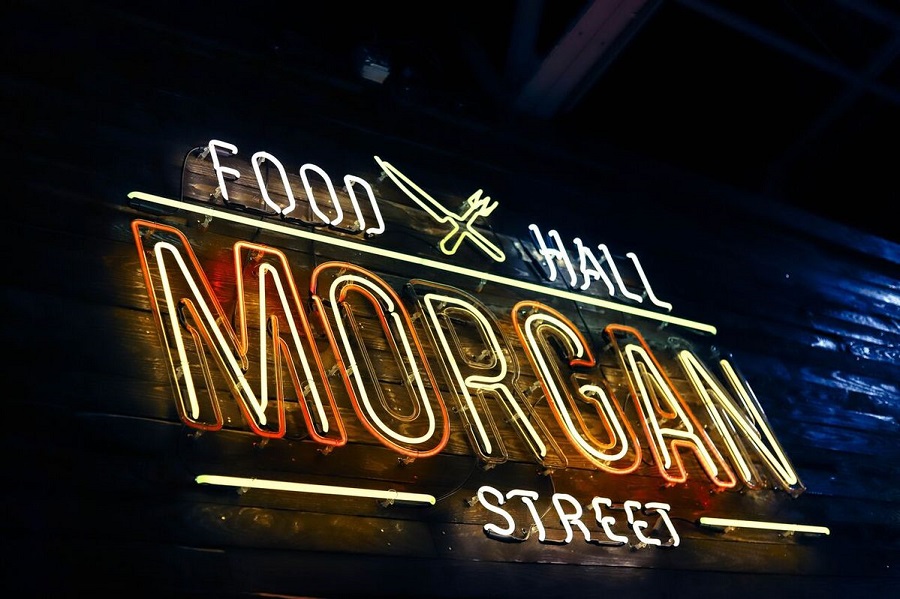Food safety is a critical aspect of family health and well-being.. Every day, millions of people prepare meals in their homes, trusting that the food they serve is safe and free from harmful contaminants. However, despite the best efforts to prepare and serve food properly, contamination can still occur. Foodborne illnesses, caused by harmful microorganisms like bacteria, viruses, parasites, and chemicals, pose a significant threat to public health. According to the World Health Organization (WHO), foodborne diseases cause approximately 600 million illnesses and 420,000 deaths each year globally. Families must be aware of food safety practices and adopt strategies to protect their loved ones from contaminated food around the clock.
In this article, we will delve into the importance of food safety, common sources of food contamination, and actionable steps that families can take to ensure the food they serve is safe, nutritious, and free from harmful pathogens. We will also highlight the role of technology and innovation in improving food safety and how families can stay vigilant and proactive in safeguarding their health.
The Significance of Food Safety
The methods and procedures employed to avoid foodborne infections are referred to as food safety. These practices are essential for protecting individuals and communities from diseases caused by consuming contaminated food. Foodborne illnesses can lead to symptoms like stomach cramps, vomiting, diarrhea, fever, and even more severe conditions such as kidney failure, neurological damage, and death. Those with compromised immune systems, Foodborne infections are more common in young children, the elderly, and pregnant women.
Maintaining food safety is a shared responsibility among food producers, processors, retailers, and consumers. However, it is primarily the responsibility of individuals to ensure that food is handled, prepared, and stored safely in the home. By adhering to proper food safety practices, families can minimize the risk of foodborne illnesses and ensure that their meals are both safe and delicious.
Common Causes of Food Contamination
From farm to table, food contamination can happen at any point in the food supply chain. The most common causes of contamination include:
- Bacteria are the most prevalent source of foodborne illnesses.harmful microorganisms like Salmonella, E. coli, Listeria, and Campylobacter are frequently found in raw meat, poultry, seafood, eggs, and unpasteurized dairy products. These bacteria can grow rapidly at improper temperatures and can multiply to dangerous levels in as little as two hours.
- Viruses: Contaminated food or water can spread viruses such as Hepatitis A and norovirus. These viruses can cause gastrointestinal issues, including nausea, vomiting, diarrhea, and abdominal pain. They are often spread by improper handwashing or handling of food and are more common in areas with poor sanitation.
- Parasites: Parasites, such as roundworms, tapeworms, and protozoa, can contaminate food through contaminated water or undercooked meats. Symptoms of parasitic infections include nausea, vomiting, diarrhea, and stomach cramps. Some parasites can also cause long-term health issues, including malnutrition and organ damage.
- Chemicals: Industrial chemicals, heavy metals like lead and mercury, and pesticides are examples of chemical pollutants. These contaminants can enter food through environmental pollution or improper handling of food during production, processing, and storage. While small amounts of chemicals may not pose an immediate threat, long-term exposure to high levels of toxic substances can lead to chronic health problems such as cancer and developmental issues in children.
- Allergens: Food allergens, such as peanuts, tree nuts, milk, eggs, shellfish, and gluten, can cause severe allergic reactions in sensitive individuals. Cross-contamination between allergenic and non-allergenic foods can occur during food preparation, leading to accidental exposure.In severe situations, this exposure may cause anaphylaxis, a potentially fatal illness that needs to be treated right once.
The Four Key Principles of Food Safety
To minimize the risk of foodborne illnesses, families should follow four key principles of food safety: clean, separate, cook, and chill.
1. Clean: Wash Hands and Surfaces Often
Maintaining proper hygiene is the primary line of defense against foodborne pathogens. Preventing cross-contamination requires cleaning hands and surfaces both before and after handling food. Here are some basic cleaning guidelines:
- Wash Hands: Always wash your hands with soap and warm water for at least 20 seconds before handling food, after using the bathroom, after touching raw meat, and after handling waste. Encourage children to do the same.
- Clean Surfaces: Frequently clean countertops, cutting boards, and utensils with hot soapy water to remove any lingering bacteria. It is essential to clean surfaces between preparing different types of food, such as raw meat and ready-to-eat foods.
- Use Separate Sponges and Towels: Use different sponges and towels for cleaning dishes and wiping surfaces. This reduces the chance of transferring bacteria from raw food to other areas of the kitchen.

2. Separate: Prevent Cross-Contamination
When dangerous bacteria spread from one food item to another, it is known as cross-contamination. To prevent this, follow these guidelines:
- Separate Raw and Cooked Foods: Always separate raw meat, poultry, seafood, and eggs from ready-to-eat foods like fruits, vegetables, and cooked items. Keep raw and cooked food on different cutting boards and use different utensils.
- Use Different Storage Containers: To avoid their juices spilling onto other foods, keep raw meats on the bottom shelf of the refrigerator.
- Use Color-Coded Tools: Consider using color-coded cutting boards and knives for different types of food to help avoid cross-contamination.
3. Cook: Use Proper Cooking Temperatures
Cooking food to the correct temperature is vital for killing harmful bacteria and other pathogens. The following general rules apply to safe cooking temperatures::
- Bring the internal temperature of the lamb, beef, and pork to 160°F (71°C).
- The ground meat ought to be warmed thoroughly at an internal temperature of 160°F (71°C).
- Raise the internal temperature for a chicken or turkey to 165°F (74°C).
- Roast fish and seafood until the internal temperature reaches 145°F (63°C).
- Eggs: Cook until the white and yolk are set.
To ensure accuracy, use a food thermometer to check the internal temperature of meats and other cooked foods. This is the most reliable way to ensure food is safe to eat.
4. Chill: Store Food at Safe Temperatures
Proper chilling of food is critical to slowing bacterial growth.Here are some essential guidelines for food storage safety:
- Refrigerate Promptly:Never left perishable items out at room temperature for longer than twenty minutes. If the temperature exceeds 90°F (32°C), reduce this time to one hour. After cooking, store leftovers in shallow containers in the refrigerator to help them cool quickly.
- Maintain the Proper Temperature: Keep your refrigerator at or below 40°F (4°C) or your freezer at 0°F (-18°C). To be sure the temperature is within the safe range, use a refrigerator thermometer.
- Safe Food Thawing: Avoid letting food get to room temperature.Instead, use cold water, a microwave, or a refrigerator to properly thaw food. Cook the meal right away when it has thawed.
Food Safety and Special Events
Family gatherings, holidays, and special occasions often involve large amounts of food preparation and serving. Even while these gatherings are fun, there are particular difficulties with regard to food safety. To ensure food safety during such events, consider the following tips:
- Serve Hot Food Hot and Cold Food Cold: To maintain hot foods at the proper temperature (beyond 140°F or 60°C), use slow cookers, warming trays, or chafing dishes.For cold dishes, use ice trays or refrigerated containers to keep the food chilled (below 40°F or 4°C).
- Minimize Leftovers: Prepare food in smaller batches to avoid excessive leftovers, which can increase the risk of contamination. If you do have leftovers, refrigerate them promptly and consume them within a safe time frame, typically within three to four days.
- Label Dishes with Allergens: When hosting gatherings, label dishes that contain common allergens like nuts, dairy, or shellfish. This will help guests avoid accidental exposure and prevent allergic reactions.
The Role of Technology in Food Safety
In the digital age, technology is playing an increasingly important role in enhancing food safety. Innovations in food monitoring, storage, and preparation are helping to reduce the risks associated with contaminated food. Some notable technologies include:
- Smart Refrigerators: Modern refrigerators equipped with sensors and connectivity features can help monitor food temperatures and alert users when their refrigerator is too warm. In addition to monitoring expiration dates, some smart refrigerators make recipe recommendations based on the ingredients that are on hand.
- Food Safety Apps: Various apps are available that allow consumers to track food recalls, check the safety of food products, and access real-time information on foodborne outbreaks. These apps help families stay informed and make better decisions about the food they consume.
- UV Light Technology: Research is exploring the use of ultraviolet (UV) light to disinfect food surfaces and reduce bacterial contamination. UV light can be used to sanitize food during processing or packaging, offering a chemical-free alternative to traditional disinfectants.
Food Safety: Ensuring a Safe and Healthy Food Environment for All
Food safety is an essential aspect of public health that plays a pivotal role in preventing foodborne illnesses and promoting well-being across the globe. As the food industry continues to evolve, maintaining high standards of safer food has become increasingly important. The safer foodand Standards Authority of India (FSSAI), food safety officers, safer food certifications, and hygiene practices are all integral to a food safety framework that aims to safeguard consumers and promote healthier communities. This article will explore various aspects of safer food, including regulatory bodies like the FSSAI, the importance of safer food and hygiene, personal hygiene, safer food certifications, and how everyone can contribute to maintaining high standards in food safety.
What is Food Safety?
Food safety refers to the practices and procedures used to ensure that food is free from contaminants that may cause harm when consumed. These contaminants can include harmful bacteria, viruses, parasites, chemicals, allergens, and physical hazards that can lead to foodborne illnesses. Food safety involves the entire food production process—from farm to fork—and encompasses all aspects of handling, preparing, cooking, storing, and serving food. By adhering to food safety standards and guidelines, the risk of foodborne diseases can be significantly reduced, ensuring safe and nutritious meals for everyone.
Food Safety and Standards Authority of India (FSSAI)
In India, food safety is overseen by the Food Safety and Standards Authority of India (FSSAI), a regulatory body established under the safer food and Standards Act of 2006. The FSSAI is responsible for setting food safety standards, ensuring compliance with those standards, and promoting safer food awareness throughout the country. FSSAI works to protect consumers’ health by regulating safer food and hygiene practices across the food industry, including manufacturing, distribution, and retail.
FSSAI’s primary role includes:
- Setting Standards: FSSAI establishes and implements standards for food products, covering areas like hygiene, labeling, packaging, and food additives.
- Licensing and Registration: Food businesses must obtain licenses or registrations from FSSAI to legally operate in India. This guarantees that food establishments adhere to established guidelines for food safety.
- Regulating Food Safety Officers: FSSAI employs safer food Officers (FSOs) to monitor food safety practices at various levels of the food supply chain.
- Awareness Campaigns: The FSSAI actively engages in awareness campaigns, such as the World Food Safety Day, to educate the public and food businesses on safer food practices.

The Role of Food Safety Officers
Food Safety Officers (FSOs) play a critical role in ensuring that food safety standards are met at all levels of the food supply chain. They are responsible for inspecting food establishments, ensuring that safer food guidelines are followed, conducting food testing, and enforcing regulations. FSOs are essential in educating food handlers and businesses on best practices for food hygiene and safety.
Key responsibilities of a Food Safety Officer include:
- Inspection and Enforcement: FSOs conduct regular inspections of food establishments, including restaurants, processing plants, food vendors, and retailers, to ensure compliance with safety standards.
- Food Safety Audits: FSOs carry out audits to assess food safety management systems, verifying that food businesses are adhering to the prescribed protocols.
- Training and Education: FSOs provide training sessions for food handlers to promote awareness about hygiene, safe food handling, and prevention of foodborne diseases.
- safer food and Sanitation: One of the most important aspects of safer food is cleanliness and sanitation, which FSOs make sure food facilities maintain.
World Food Safety Day
World safer food Day, celebrated annually on June 7th, was established by the United Nations to raise awareness about food safety and the importance of safe food practices. This day serves as a reminder that foodborne illnesses are preventable and that safer food standards must be upheld globally. The theme of World Food Safety Day changes each year, focusing on different aspects of food safety such as hygiene, sustainable practices, and the role of consumers in food safety.
World safer food Day is an excellent opportunity for governments, businesses, and consumers to reflect on the importance of food safety and hygiene, as well as to educate and engage the public in making informed choices about the food they consume.
Food Safety and Hygiene
Food safety and hygiene are inextricably linked. Hygiene involves the cleanliness of the food environment, food handlers, and food storage facilities. It is essential to maintain proper hygiene in food establishments to prevent contamination and ensure the safety of consumers.
The main elements of food safety and hygiene are as follows:
- Personal Hygiene: Food handlers must maintain high standards of personal hygiene, including regular hand washing, wearing clean uniforms, and avoiding the handling of food when ill.
- Environmental Hygiene: To stop bacteria from growing, food preparation spaces, tools, and utensils need to be cleaned and sanitized on a regular basis.
- Food Storage Hygiene: Foods should be stored at the correct temperature to prevent spoilage and the growth of harmful bacteria. Refrigeration, freezing, and proper packaging are essential for maintaining food safety.
- Cross-Contamination Prevention: Foods should be stored, prepared, and served in a way that prevents the transfer of harmful bacteria or allergens from one food item to another.
Food safety and hygiene extend beyond food businesses and involve consumers’ roles in ensuring their food is safe to eat. Good hygiene practices in the home, such as washing fruits and vegetables and cooking meat to the right temperature, are crucial to preventing foodborne illnesses.
Personal Hygiene and Food Safety
Personal hygiene plays a significant role in maintaining food safety. Proper handwashing, maintaining clean clothing, and wearing appropriate protective gear (e.g., gloves and hairnets) are essential for food handlers. Not only does good personal hygiene protect the food being prepared or served, but it also prevents the transmission of harmful bacteria or viruses from one individual to another.
Personal hygiene can be broken down into several important aspects:
- Hand Washing: Food handlers must wash their hands thoroughly with soap and water before and after handling food, especially raw meats and poultry.It is possible to use hand sanitizers when soap and water are not available.
- Clean Clothing: Food handlers should wear clean clothing and change into fresh uniforms regularly to avoid transferring dirt or bacteria to food.
- Health Checks: Food handlers should not work if they are sick, especially if they have symptoms like vomiting, diarrhea, or a cold, as these illnesses can be passed to consumers through contaminated food.
| Aspect | Description |
| Hygiene Food Safety Course | A training program that educates individuals on essential hygiene and safer food practices to prevent foodborne illnesses. |
| Purpose | To ensure food handlers are aware of proper sanitation, handling, and hygiene practices, improving safer food in the workplace. |
| Topics Covered | Personal hygiene, safe food storage, cross-contamination prevention, cleaning and sanitizing, foodborne pathogens, and handling allergens. |
| Target Audience | Food handlers, kitchen staff, food service employees, and anyone involved in food preparation or handling. |
| Benefits | Helps in maintaining safe food handling practices, reducing the risk of contamination, and ensuring compliance with food safety regulations. |
| Certification | On completion of the course, individuals may receive a certification verifying their knowledge of food safety and hygiene standards. |
To highlight the importance of personal hygiene, many businesses use food safety personal hygiene posters to remind staff of the procedures that must be followed. These posters often include visual cues on proper handwashing, glove usage, and safe food handling.
Food Safety Certifications
Official acknowledgement that food enterprises adhere to particular food safety standards and procedures is provided by food safety certificates. These certifications ensure that businesses operate within legal regulations and adhere to industry best practices. There are several types of food safety certifications that businesses can pursue to ensure they meet the highest standards.
Some of the key certifications include:
- FSSAI Certification: In India, food businesses must obtain an FSSAI license or registration to operate legally. This certification guarantees that companies follow the safer food and hygiene guidelines set forth by the FSSAI.
- Hazard Analysis and Critical Control Point (HACCP): This international certification is based on identifying and managing safer foodhazards. It is particularly common in food processing and manufacturing plants. food safety hazard refers to any biological, chemical, or physical agent in food that can cause harm to consumers. These hazards include harmful bacteria, viruses, allergens, pesticides, and foreign objects like glass or metal.To avoid foodborne infections and guarantee food safety, these dangers must be identified and controlled.
- ISO 22000 is a global standard for food safety management systems. Any company involved in the food supply chain, from farm to table, can use it.
- ServSafe: Offered by the National Restaurant Association (NRA), ServSafe is a widely recognized food safety certification in the United States. It covers a range of safer food practices, including safe food handling, sanitation, and workplace hygiene.
- Food and Safety Certificate ensures that individuals and businesses comply with food safety standards and practices. This certification verifies that food handlers are trained in proper hygiene, safe food preparation, and contamination prevention. It helps maintain public health, reduces the risk of foodborne illnesses, and builds consumer trust in food services.
- Food safety certificate ontario is a requirement for food handlers and operators in the food service industry. It ensures that individuals are trained in proper food handling, hygiene, and safety practices to prevent foodborne illnesses. Obtaining this certification helps maintain a safe, healthy environment for consumers in Ontario.
- Do food safety practices involve following guidelines to prevent contamination and ensure food is safe for consumption. This includes proper handwashing, storing food at correct temperatures, avoiding cross-contamination, and cooking to safe temperatures. Implementing these practices reduces the risk of foodborne illnesses, promoting health and well-being for everyone.
| Aspect | Description |
| Food Safety Certificate | A formal certification that indicates an individual or business complies with food safety standards, ensuring safe food handling, hygiene, and contamination prevention. |
| Purpose | To confirm that food handlers and food establishments are trained and equipped to maintain food safety and prevent foodborne illnesses. |
| Types of Certification | includes certifications for companies such HACCP, ServSafe, and FSSAI, as well as for food handlers and managers of safer food. |
| Requirements | Often includes completion of a food safety training course and passing an exam to demonstrate understanding of hygiene, food handling, and safety practices. |
| Benefits | Ensures legal compliance, reduces the risk of foodborne illnesses, improves consumer trust, and maintains a high standard of hygiene. |

Obtaining a food safety certification provides consumers with confidence that the food they purchase or consume has been prepared and handled in accordance with stringent safer food practices.
safer food Training and Education
Food safety education and training are essential for ensuring that food handlers and businesses are up to date on the latest food safety practices. safer food courses are available for a range of stakeholders, from food handlers to business owners.
Training programs often cover:
- Hygiene Standards: How to maintain personal and environmental hygiene in food establishments.
- Foodborne Illnesses: Identifying common foodborne pathogens and understanding how to prevent contamination.
- Safe Food Handling: Procedures for safely preparing, cooking, and storing food.
- Food Safety Regulations: Understanding national and international safer food standards, including those set by the FSSAI.
- Food & Safety: refers to the practices and measures taken to ensure food is safe for consumption. This includes preventing contamination, maintaining proper hygiene, cooking food to safe temperatures, and storing it correctly. Adhering to food safety standards helps protect individuals from foodborne illnesses and promotes overall public health.
- For businesses and organizations looking to ensure safer food, Premier Food Safety provides excellent solutions. It provides training, consulting, and certification services to help food handlers meet industry standards. With a focus on preventing foodborne illnesses, Premier Food Safety helps businesses maintain hygiene, comply with regulations, and ensure consumer well-being.
| Topic | Description |
| State Food Safety | Involves local regulations and practices implemented by state authorities to ensure food is handled, prepared, and stored safely. These guidelines aim to protect public health by monitoring food establishments, enforcing safety standards, and educating businesses and consumers. |
Food safety hygiene courses are available both online and in-person and are often required for those working in foodservice or food production industries. Individuals who complete a food safety course can receive a food safety supervisor certificate that qualifies them to oversee safer food practices within their organization.
Food Safety and the Food Industry
Maintaining food safety regulations is mostly the responsibility of the food sector. Companies like Ecolab Food Safety and Hygiene Solutions Pvt. Ltd. provide services that help businesses maintain a hygienic food environment by offering cleaning products, sanitation services, and safety consultations. These companies help ensure that food establishments meet safety regulations and operate with best practices.
It’s not just the businesses that are responsible for food safety; consumers must also be vigilant when it comes to selecting, handling, and consuming food. From purchasing food from reputable suppliers to storing and preparing food at home, everyone plays a part in maintaining a safe food environment.
| Aspect | Description |
| Food Safety | Food safety refers to the practices and measures used to handle, prepare, store, and serve food in a way that prevents contamination and ensures it is safe for consumption. |
| Purpose | To prevent foodborne illnesses caused by harmful bacteria, viruses, parasites, chemicals, and allergens, ensuring the food is safe to eat. |
| Key Elements | Proper handwashing, safe food handling, maintaining hygiene, cooking food to the correct temperature, and correct food storage to prevent contamination. |

Conclusion
Food safety is vital for protecting the health of individuals and communities. Ensuring food safety involves a combination of proper hygiene, training, certification, and adherence to national and international standards. In India, the safer food and Standards Authority of India (FSSAI) plays a central role in regulating food safety, ensuring businesses comply with food safety regulations, and educating the public. At the same time, safer food officers, food handlers, and consumers must be proactive in maintaining high standards of hygiene and food handling.
By supporting initiatives like World Food Safety Day and encouraging food safety certification, we can help reduce the occurrence of foodborne illnesses and promote safe food practices at every level. Whether it’s through personal hygiene, professional certifications, or government regulations, everyone has a responsibility to ensure that food safety is a top priority in our daily lives. Food Safety Food – Ensuring Health by Preventing Contamination and Promoting Hygiene Practices. Food Safety Act of 2013 ensures safer food standards nationwide. safer food Definition ensures proper handling, preparation, and storage of food.
FAQ:
What is food safety and sanitation?
Answer: safer food and sanitation involve practices that prevent food contamination and ensure clean, safe food handling, preparation, and storage to protect consumers from foodborne illnesses.
What is food hygiene and safety?
Answer: Food hygiene and safety refer to the proper handling, preparation, and storage of food to prevent contamination and ensure it is safe for consumption, reducing the risk of foodborne illnesses.
What is safer food and food hygiene?
Answer: safer food and food hygiene are complementary concepts that focus on preventing food contamination by following hygienic practices, proper storage, and maintaining cleanliness in food handling processes.
What is food hygiene safety?
Answer: Food hygiene safety ensures the prevention of foodborne diseases by practicing cleanliness and sanitation during food handling, preparation, and storage, reducing the risk of contamination.
How to become a safer food officer?
Answer: To become a food safety officer, you typically need to complete a relevant training program, obtain certifications in safer food, and meet the qualification requirements set by regulatory bodies like FSSAI or local health departments.
What is the safer food definition?
Answer: safer foodrefers to the measures and practices taken to handle, prepare, and store food in a way that prevents contamination and ensures it is safe for consumption, reducing the risk of foodborne illnesses.
How must time/temperature control safety food be labeled?
Answer: Time/temperature control safety food should be labeled with clear indications of when the food was prepared, its expiration date, and the required storage temperature to maintain safety and prevent bacterial growth.
What is the safer food zone?
Answer: The safer food zone refers to the range of temperatures (generally between 40°F and 140°F or 4°C to 60°C) where bacteria grow rapidly, making it a critical area to avoid for safe food storage and preparation.







Regional Flavors That Will Perfect Your Dinner Party!24/7
06th Jul 2025[…] Eastern Europe, we’ll delve into how you can use these regional influences to perfect your next dinner party. So, whether you’re an experienced home cook or a beginner looking to impress your guests, […]